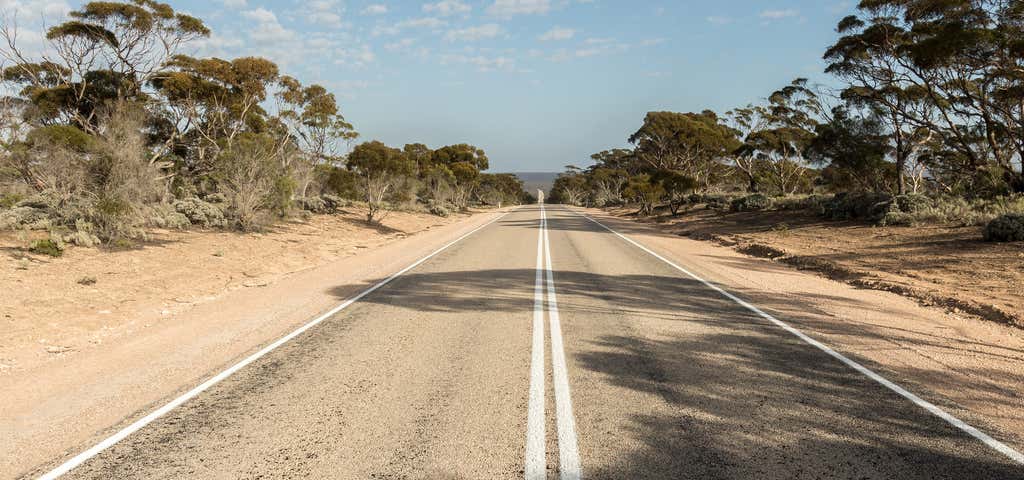The Indigenous History and Culture Trail is an incredible opportunity to experience the rich Aboriginal culture and heritage of the Eyre Peninsula. Stretching from Poonindie near Port Lincoln to the head of the Great Australian Bight, the trail provides a unique road trippin’ experience.
Aboriginal people have populated Eyre Peninsula for many thousands of years, from the desert dwellers in the far west of the Peninsula to the coastal inhabitants. There are many dreaming stories about the development of the culture, unique geology and wildlife; this oral history has been passed down through many generations.
From indigenous art to giant wombats to historical sites (some with rather grim memories), and past all the incredible nature and communities in between, this journey will captivate you from start to finish.
Poonindie Native Training Mission
Make your first stop at Poonindie, where an historic church tells a story of what the community used to represent. The town was established in 1850 by Adelaide Archdeacon Matthew Hale as a ‘training institution’ for young Aboriginal families, aiming to protect them from both the immoral influences of European settlers in Adelaide and the ways of their own people.
This mission continued for 45 years until the mid 1890s, ‘reclaiming Aboriginal youths from barbarism’ and assimilating them to a life of Christianity. When closed in 1894, the land was converted into an Aboriginal land reserve, with the original church still remaining in use today. A visit to Poonindie is a meaningful reminder of the impact of Christian missionaries on Aboriginal culture and how Aboriginal lives were forcefully altered due to such training institutions.
1
Elliston Reconciliation Monument
Visit the award-winning Aboriginal Reconciliation Monument located on the Elliston Coastal Trail, which recognises the frontier clashes of early settlement in the region. The monument forms part of the 13.6 km walking and driving trail and acknowledges the death of Aboriginal people at Waterloo Bay in 1849.
Due to a lack of written evidence, this event has been subject to much speculation as to whether, or to what extent, it occurred. Limited archival records suggest that three Aboriginal people were killed in the incident and five were captured, however, accounts of the killing of up to 260 Aboriginal people at the cliffs have persistently circulated since the 1880s. Local Aboriginal people have oral history traditions that a large-scale massacre occurred.
The monument in Elliston has been awarded for its wording, which states that it “commemorates an incident, referred to by the traditional owners of this land as ‘The Massacre of Waterloo Bay.’” This wording allows the visitor to the monument to form their own interpretation of the incident, focusing less on the controversy and more on reconciliation.
2
Ceduna Aboriginal Arts And Culture Centre
For another artistic experience, a visit to the Ceduna Aboriginal Arts & Culture Centre is a must. Established in 2001, the centre is not just a hub for the arts, but is a successful business which continues to initiate positive outcomes for all Aboriginal artists of the region. The business encourages indigenous participation in the arts and in the operation of the business itself. This includes the development of economic skills, community cultural development, the provision of resources, training and safe working environments, and much more. Most importantly, they support the production, development, promotion and sales of Aboriginal visual arts.
The artists are strongly influenced by their environment, with the diverse cultural environment of land, sea and desert being reflected strongly in their works. Stop off at Ceduna Aboriginal Arts & Culture Centre and learn about the artists and their inspiring art.
3
Koonibba
Koonibba is another former mission along the Aboriginal Touring Route, now a small Aboriginal community of around 150 people (and a passionate football club). The historic Our Redeemer Lutheran Church still remains to remind us of these former times. Founded in 1901, the Koonibba mission was established by the Lutheran Church, soon opening the Koonibba Children’s Home to be used as a training ground for indigenous youths.
Between the 1930s-1950s, the conflict between the Church and the Aboriginal residents began to amplify, with multiple petitions and protests. The mission was taken over by the South Australian Government in 1963, then transferred to the Aboriginal Land Trust in 1975. The Trust leases the site to the local Koonibba Aboriginal Community Council, which self-manages the community.
4
Scotdesco Aboriginal Community
In the heart of wombat country, visit Scotdesco, a small Aboriginal community situated either side of the Eyre Highway. Not only is this place the home of the iconic Big Wombat, it’s a relaxed family community who welcome the chance to give visitors a new understanding of indigenous perspectives. Speak with members of the Wirangu family group, who represent the spirit of determination within Aboriginal people.
Get delicious coffee by the giant wombat sculpture, explore the art workshop, meet the artists and purchase affordable artwork, all while expanding your knowledge of Aboriginal culture and history.
5
Maralinga Tours
A dark, often suppressed chapter of Australian history is revealed with a visit to Maralinga, a remote and long-abandoned town in north-west South Australia. Between 1954 and 1963, the British government detonated seven nuclear bombs at the Maralinga testing site, and long-lasting radioactive toxins made the area off limits for any visitors for decades, despite multimillion dollar clean-up operations. This included the displacement of many Aboriginal peoples who inhabited in the region before the testing commenced, many of whom never found their way back to their families or traditional lifestyles.
In 2000, authorities finally deemed it safe for visitors, and people can now participate in tours of the eerily isolated facility. Visitors are taken by coach from the comfortable campground at the old Maralinga Village to stand on one of the largest airstrips in the Southern Hemisphere (it was a designated as a backup landing site during the United States Space Shuttle program), and into the Forward Area (the detonation zones) to see and learn about the stories of these times.
Touring is by pre-arranged entry permit and the one day tour package includes the full day tour, two nights pre/post tour in the campground and permit. They also run 2 day tours on alternate Thursdays, which include 3 nights camping and permit. Bookings and payment is arranged at the website.
6
Yalata Indigenous Protected Area
The Yalata Aboriginal Community is located on a tract of land stretching along the coast from the west of Nundroo to the Head of the Bight. The land is owned by the Aboriginal Lands Trust on a perpetual lease to Yalata Aboriginal Community Inc. The Yalata Indigenous Protected Area provides some of the best surf fishing available in Australia, including the giant mulloway. Bookings are essential.
To gain access to the surf beaches at Yalata, all visitors need to have permission and obtain a permit from Yalata Community Inc. Camping is only permitted in designated areas. Information relating to camping permits and areas can be obtained by visiting the Yalata Land Management website at www.yalata.org or by ringing (08) 8625 6201. Permits cost $12 per day for adults or $25 per day for families. No alcohol or firearms can be brought into Yalata.
Head Of Bight
Stand on the edge of a 90m limestone cliff and watch as a whole population of southern right whales splash around in the clear blue below. The Head of Bight whale watching area is renowned for its land-based viewing of the magnificent southern rights between May and October. A clifftop boardwalk to a viewing platform can reveal up to a hundred migrating whales in the clear ocean at the foot of the cliffs.
The location also provides mind-blowing views of the Bunda Cliffs to the west and the giant sand dunes and long beaches to the east, as well sometimes treating you to sightings of Australian sea lions and the great white shark.
This has often been recognised as the best and most reliable opportunity for clifftop whale watching in Australia, with over 15000 visitors experiencing the magic every year.
Explore More Trip Guides
Route 66 Leg 2: St. Louis to Tulsa
- 61 Places
- 18:31
- 876 mi
Route 66 Leg 1: Chicago to St. Louis
- 71 Places
- 16:31
- 636 mi










